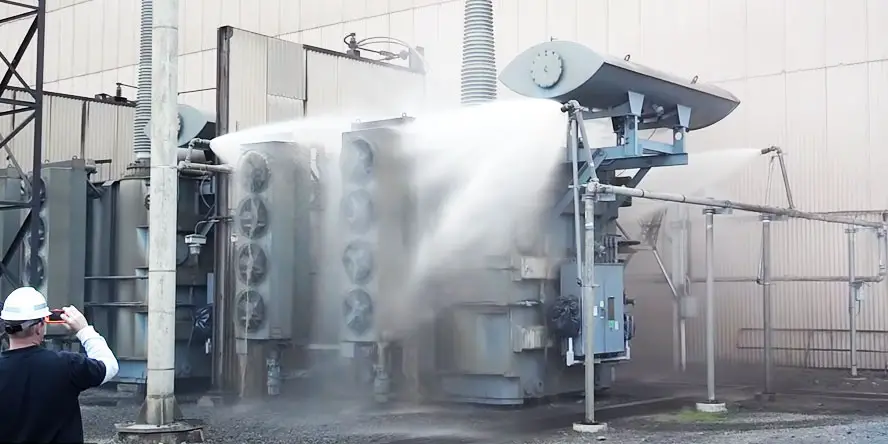Power transformers are rated in Volt Ampere (VA) or kiloVolt-Amperes (kVA) or MVA rather than watts (W) because of the nature of AC power systems and how transformers handle loads of varying power factors.

Here’s why:
1. Separation of Apparent Power from Real Power:
In AC systems, power is made up of three components: Real Power (P), measured in watts (W), which does actual work. Reactive Power (Q), measured in volt-amperes reactive (VAR), which accounts for energy oscillating between the source and reactive components (inductors and capacitors).
Apparent Power (S), measured in volt-amperes (VA), which is the vector sum of real and reactive power. Apparent Power is the total power a transformer must handle, regardless of the type of load connected. Using VA instead of W allows the transformer to handle both resistive and reactive loads.
Real Power and Reactive Power are two components of power in AC electrical systems. Understanding both is crucial, as they affect how energy is consumed and managed within the system.
Real Power (Active Power)
- Definition: Real power, also called active power, is the actual power consumed by electrical devices to perform work. This is the power that converts electrical energy into other forms like heat, light, or mechanical energy.
- Measurement Unit: Measured in Watts (W).
- Mathematical Formula: For a simple AC circuit with voltage V, current I, and power factor cos(θ)
- P=V⋅I⋅cos(θ)
- Power Factor Influence: Real power is influenced by the power factor, which depends on the phase angle θ between voltage and current. Only the in-phase component of the current contributes to real power.
Reactive Power
- Definition: Reactive power is the component of power that oscillates between the source and reactive elements (like inductors and capacitors) in an AC circuit. It does not perform any real work but is necessary to maintain the magnetic and electric fields within these components.
- Measurement Unit: Measured in Volt-Amperes Reactive (VAR).
- Mathematical Formula: Using voltage V, current I, and power factor sin(θ)
Q=V⋅I⋅sin(θ) - Effect on System: Reactive power is crucial in AC systems because it supports the voltage levels needed for energy transfer across the network, especially for inductive loads like motors and transformers.
Relationship Between Real and Reactive Power: Apparent Power
- Apparent Power (S) is the combination of real and reactive power and this whole power is handled by transformers, it represents the total power supplied by the source.
- Measurement Unit: Measured in Volt-Amperes (VA).
- Mathematical Relationship: Apparent power S is given by: S=sqrt{P^2 + Q^2}
- Power Triangle: Real power P, reactive power Q, and apparent power S form a power triangle:
- The horizontal leg is the real power P,
- The vertical leg is the reactive power Q,
- The hypotenuse is the apparent power S.
2. Power Factor Variability : Power factor is the ratio of real power to apparent power and varies with different types of loads. Since transformers are designed to supply any kind of load (resistive, inductive, or capacitive), their rating in VA doesn’t specify a particular power factor. By using VA, transformer ratings are independent of the load’s power factor, so we don’t need to recalculate their capacity based on power factor.
3. Transformer Heating and Losses :The heating and losses in a transformer depend on the total current flowing through its windings, which is directly related to apparent power (VA) rather than real power (W). By rating transformers in VA, manufacturers ensure they can handle the thermal effects and magnetic losses generated by the apparent power flowing through them, regardless of how much real power is being used.
4. Universal Applicability in AC Systems : Using VA as a unit allows for a consistent and universal rating system across AC equipment. It applies to transformers in any AC system and makes it easier to calculate and match with other components rated in VA or kVA. In summary, power transformers are rated in VA or kVA to handle power across various load types and power factors .